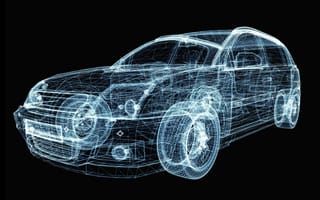It was only a matter of time before CCC Intelligent Solutions enabled the use of data to deliver groundbreaking products to its customer base.
The automotive technology company has always been aware of how its data can be leveraged, and its adoption of artificial intelligence tools has become even more pronounced following the launch of a new product that uses AI to transform photos into estimates.
Otherwise known as “straight-through processing,” CCC’s inspired use of the innovative technology promises to deliver one of the most requested — yet challenging — offerings of the auto insurance economy: a fully digitized system of qualified claims.
“This has been a goal for many in the insurance industry for several years — and is now realized through CCC’s first AI-powered estimating solution,” Director of Product Management Sowjanya Padmanabhuni said.
Built In Chicago connected with Padmanabhuni to learn more about how CCC Intelligent Solutions brought its next-generation innovation to market, and how its latest spark of inspiration intends to reimagine the customer experience.
When did you first realize that your data may have some untapped value?
CCC Intelligent Solutions started as a car valuation product for auto insurers in 1980 and has been a data company ever since. Today, we process more than 13 million auto damage claims and more than a half-billion photos every year.
Our very first deep-learning model helped us realize what could be achieved by training our AI with photos. With just a single photo, the model was able to predict the outcome of whether a vehicle was a total loss or not. This was the “aha moment” for us that opened the door to new possibilities.
We recently launched our first straight-through processing product that allows insurance carriers to estimate damages in seconds and helps drivers advance accordingly, whether that’s scheduling repairs or evaluating settlements. CCC’s Estimate-STP product generates an AI-powered line-level vehicle damage estimate in real time. This has been a goal for many in the insurance industry for several years.
How did you bring this product to life?
It has been an exciting journey to watch. Straight-through auto claims processing had never been done before. Creating a line-level estimate from photos was certainly challenging, but even more so was orchestrating the entire workflow that would enable a touchless experience.
A large team of product managers, engineers, data scientists, business analysts and program managers worked on the product for more than a year to bring it to market. Having been with CCC for a long time certainly helped me connect the dots with many of our core product capabilities, such as mobile, parts, audit, workflow and other solutions needed to enable this seamless digital experience. Everyone involved in the product’s development contributed to its success.
The collaboration across teams and functional areas was critical to helping us realize the vision. Our core team met at a regular cadence to discuss their various dependencies, gaps, challenges and plans. A larger go-to-market team came together to bring in multiple customers, enable their configurations and workflows, and troubleshoot scenarios. This rigor enabled us to act on market and internal feedback swiftly.
Everyone involved in the product’s development contributed to its success.”
What’s the biggest technical challenge you faced along the way?
Producing a line-level estimate from photos and claim data was certainly challenging. We had to get to the very core of our estimating product and understand how to integrate AI solutions. Vehicles are getting more complex, designs are changing and there is a wide range of parts that could be different from one vehicle model to another. One damaged section could have a cascading effect on multiple parts and operations. For example, a front hit to the bumper could have an impact on headlamps, the fender, the bumper grille, parking sensors or many other parts. Understanding this interplay by vehicle model is very difficult.
This complexity required combining the disciplines of engineering, data science and vehicle repair, bringing subject matter experts to work together. We identified multiple areas of research, experimented with many iterations and evaluated the results from the perspective of the different disciplines. We ran regression tests on the entire product to measure its performance and ensure its readiness. Equally important was including controls that allow insurance carriers to configure the tool to implement their rules and to allow them to use or discard the predictions based on confidence levels.








.jpg)
